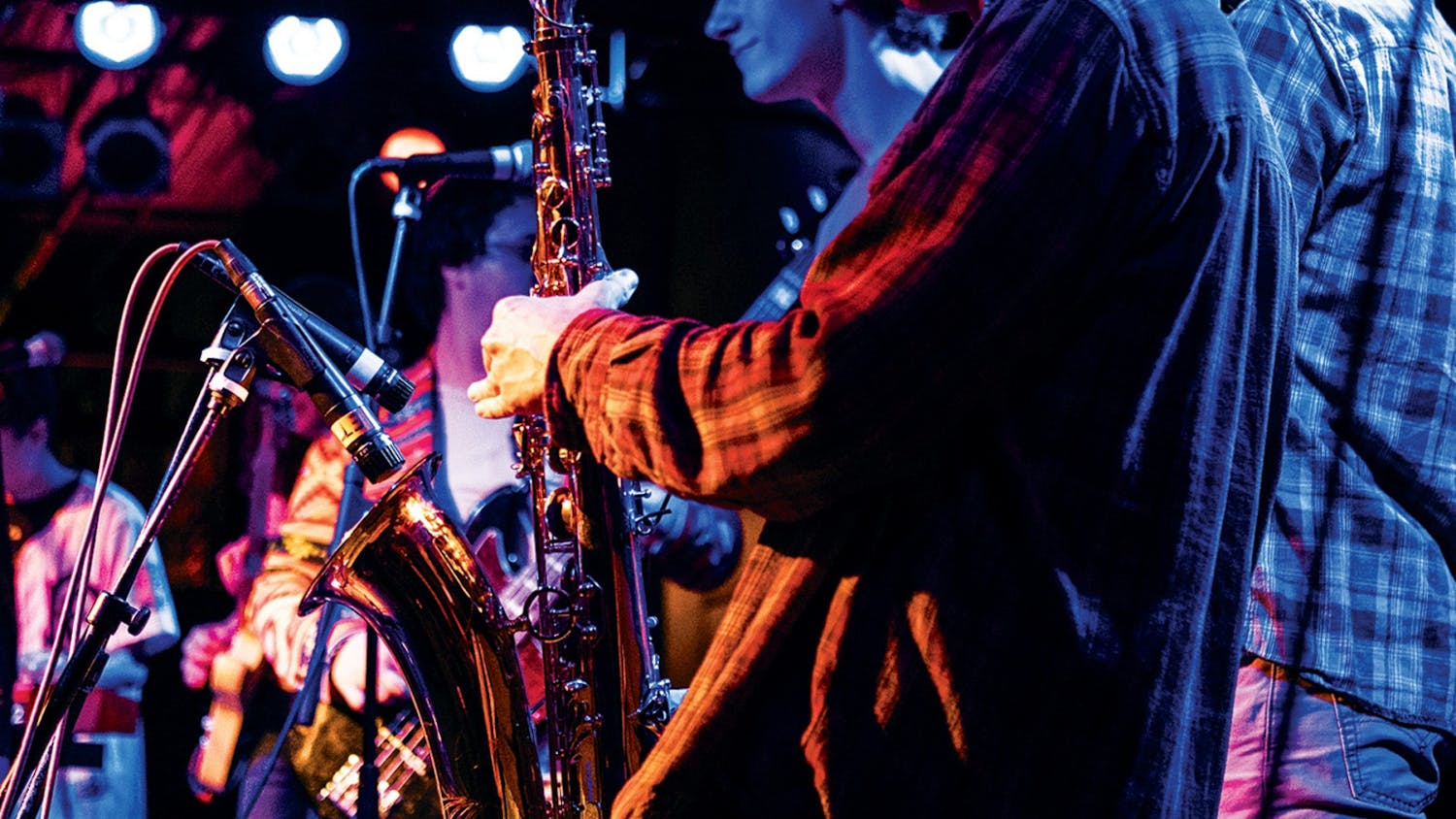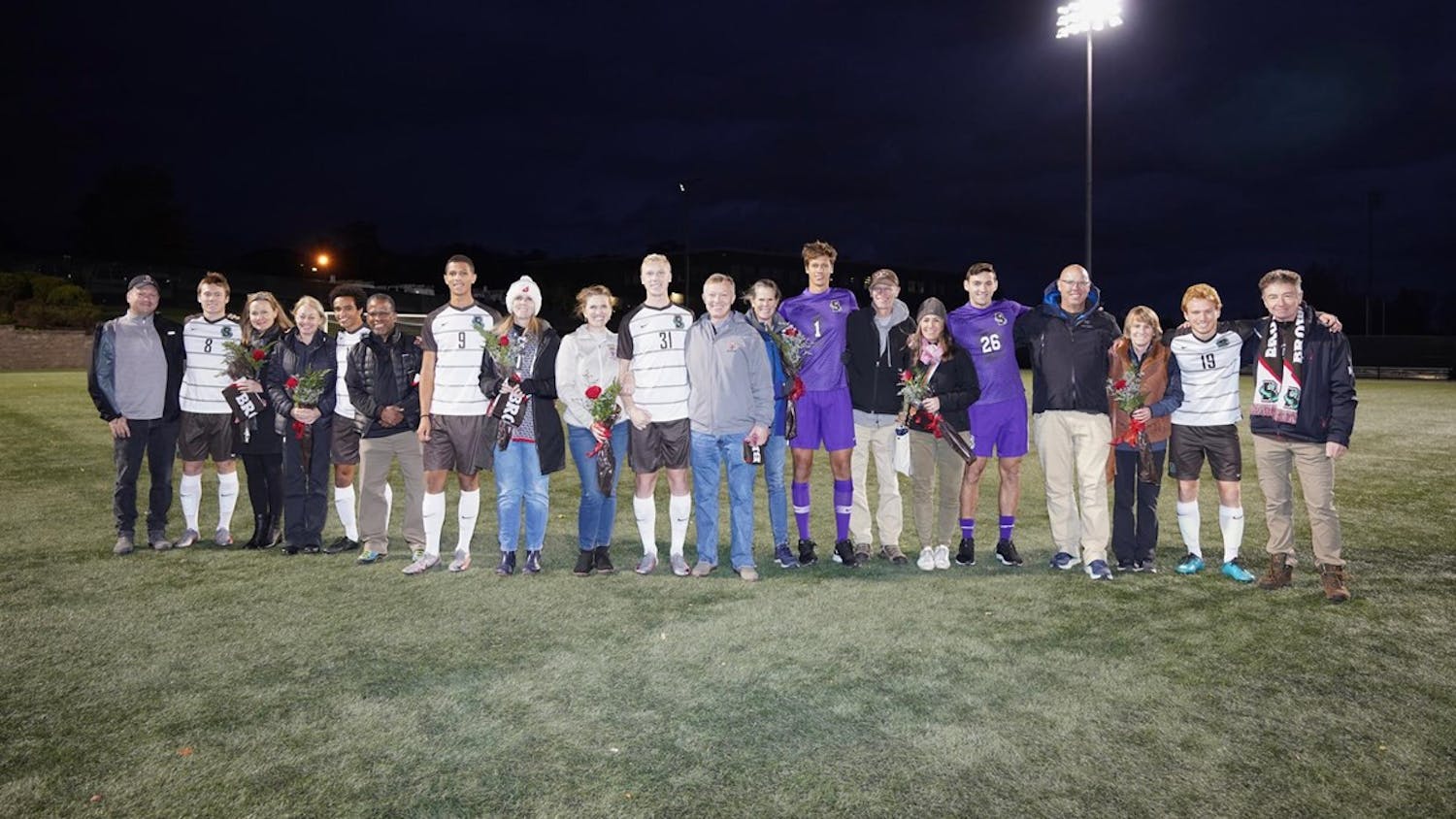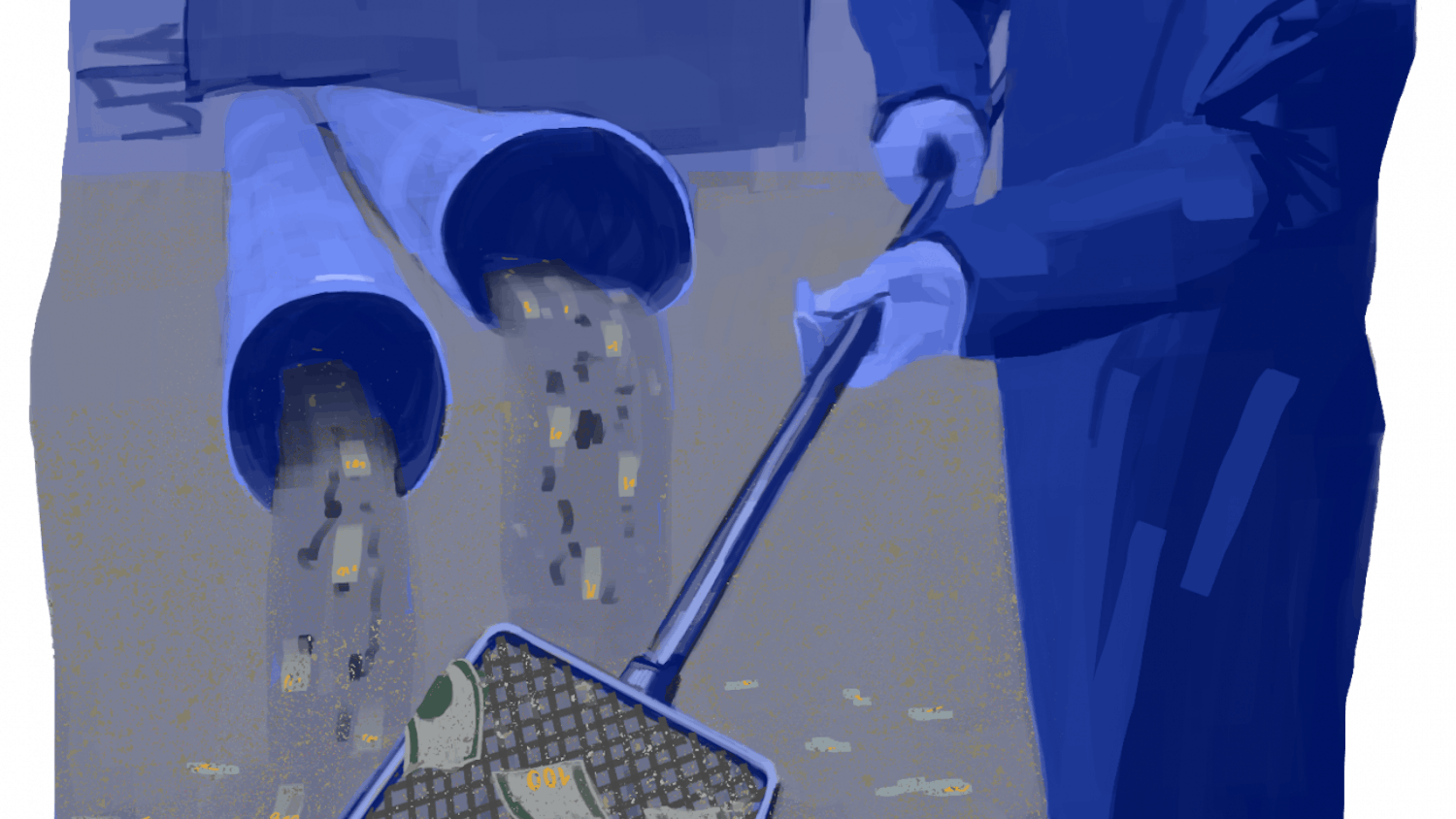On the night of May 4, 1970, 3,000 Brown students gathered on the Main Green. Later, nearly 2,000 voted to strike.
“The entire campus from Faunce House down (was) filled with students,” said Doug Hurley ’71, student government president at the time and a leader of the strike. He stood with other students on the steps of Sayles Hall, presiding over the nighttime meeting.
They joined students at hundreds of universities and colleges that went on strike that day, responding to police shootings of student protestors at Kent State University and to the invasion of Cambodia, former President Richard Nixon’s latest move to win the war in Vietnam.
Faculty members voted to make classes and exams optional for the rest of the year, and Brown’s campus transformed into a center for antiwar activism. Students organized petitions, canvassed in Providence and rallied at the State House and in Washington.
“It was a very lively time that definitely had its drawbacks,” said Michael Rosen, professor emeritus of mathematics. He added, laughing, “It’s frightening how long ago it was.”
‘Symbolic engagement’
The late 1960s were an era of major student-led change at Brown. In 1968, black students participated in a five-day demonstration to protest the University’s lack of support for students of color. The next year, a student-led initiative gave birth to today’s New Curriculum and the S/NC grading option. In April 1970, students obstructed a Navy recruiter and campaigned to merge the Pembroke and Brown campuses, The Herald reported at the time.
Brown students tended to choose debate and nonviolent action over aggressive protesting, as opposed to other schools where protestors burned buildings or harassed the police, Rosen said.
“We were pretty docile,” said Jeff Bergart ’70, who supplied his classmates with psychedelic class buttons and shirts that say “The Class of 1970 Strikes Again” at reunions. “You have to understand, the people at Columbia were taking over buildings,” he added.
In early 1970, the escalation of the Vietnam War, increased threat of being drafted and Kent State shootings intensified anger on campuses across the country.
“There was that brief amount of time when students felt they were being caught up in a historical movement that would lead to open warfare on the streets of America where they would be outgunned,” said John Emigh, professor emeritus of theater arts and performance studies, who worked at Brown at the time.
About half of the faculty attended a meeting on May 5, 1970, to decide whether to make classes and exams optional, with 80 percent voting in favor. Faculty members determined students would receive an incomplete or satisfactory mark depending on their status in the course and could receive a grade if they chose to take their final examinations.
The same day, 1,600 Brown students and some faculty members and administrators gathered in Meehan Auditorium to determine their demands and a course of action. The students demanded Nixon “withdraw all troops from Southeast Asia” and “that the president of the University, speaking in the name of the University, publicly support that demand,” The Herald reported at the time, quoting a demand proposal. Students also elected 21 students and faculty members to a steering committee for the strike, The Herald reported May 6, 1970.
The students later revised their demands to include the establishment of sanctuaries and provision of resources for Vietnamese nationals as well as the “end of political and racial repression at home and abroad,” The Herald reported in June 1970. Students then presented further demands to the Corporation, the University’s highest governing body, including ending on-campus recruiting by “military and war-profiting company personnel and the University’s investments in these companies,” on May 9, 1970, The Herald reported.
In the next two weeks, Sayles Hall became “The People’s Hall,” The Herald reported in June 1970. Students replaced the posters of past University presidents with sign-up sheets for strike activities. University employees were told they were free to participate in the strike without loss of pay.
Athletes wore black anti-war armbands and peace insignia in their final games. Fraternities issued official statements against the war. Professors held teach-ins instead of normal classes. While the University did not formally endorse the activity, administrators did not stop the strike, which continued until the end of the school year.
Emigh helped students organize anti-war street theater in downtown Providence. Scenic designer John Lee Beatty ’70 MFA’73 designed giant heads of Nixon and then-Vice President Spiro Agnew, which students paraded around during rallies as an act of “symbolic engagement,” Emigh said.
“Carrying a couple of puppet heads through the center of Providence is not going to change the world,” Emigh said. “But incrementally, when you have a lot of people doing things like this, it’s a way of contesting the way we consider ourselves to be a nation and a people of a nation.”
Voices of dissent
University administrators issued a statement saying that ending the University’s official neutrality would “infringe upon the rights of those whom it is our duty to welcome and whose rights to disagree we must always protect,” The Herald reported May 14, 1970.
Some faculty members and students did not welcome the strike.
One of Emigh’s students told him he felt the strike was “depriving him of his education,” Emigh recalled.
“I thought that it took courage for him to do it,” Emigh said. “But I also felt that it was not a normal time.”
When members of the Class of 1970 voted to change commencement activities in the spirit of the strike — cancelling the senior dance and replacing it with a forum to discuss war issues with alums, among other measures — four seniors protested. They argued that only one-third of the seniors had participated in the vote.
Richard Dannenfelser, the University associate chaplain in 1970 and a member of the strike steering committee, said he tried to foster a spirit of respectful discourse on campus.
“We have to love people enough to quarrel with them, quarrel with them meaning being involved in an honest and open dialectic conversation,” Dannenfelser said. “I think Brown for the most part did it really well.”
But students were still under “intense peer pressure to take a stand,” said Deborah Brouse ’72. Conservative groups were “not very visible — I think because they realized they would not be very popular,” she added.
Some black students said at the time that they felt marginalized by the strike.
“Some of us are uncertain whether the strike was born out of a genuine moral indignation or a short-lived response to the criminal insult to all white students perpetrated at Kent State,” Philip Lord ’70, former co-coordinator of the Afro-American society, wrote in a column in The Herald at the time. He criticized the strikers’ vague commitments to ending domestic racial oppression and their lack of action on racial justice causes.
“Black students have had four crises (in 1970) alone,” Lord wrote. “And when we boycott classes, they don’t cancel final exams.”
The Millennial Generation
Over 40 years later, the culture of activism at Brown is vastly different.
A 2011 Herald poll found that the majority of faculty members believe student activism has decreased since they attended college, and of faculty members who had worked at Brown for more than 20 years, 82.6 percent responded that activism had decreased.
In November 2011, organizers of Occupy College Hill, Brown and RISD’s offshoot of the Occupy Wall Street movement, held a strike in solidarity with student protestors who had been pepper-sprayed by university police at the University of California at Davis. About 20 students and faculty members attended, and two Brown professors canceled their classes to allow students to attend the strike.
More students showed up to support Occupy College Hill at the beginning of the movement, and participation began to wane by the time of the strike, Occupy College Hill organizer Julian Park ’12 GS said.
Occupy College Hill faced some of the same problems as the 1960s anti-war movements. Students of color felt shut out of the Occupy discussion, and students who supported immigrant rights found themselves at odds with students who saw Occupy as a citizen movement, Park said. But in comparison to the 1960s, “we don’t have the same context today at all,” Park added.
The Occupy movement also lacked a strong connection to previous struggles for social justice, he said. “It is the fragmenting of connection between generations of leaders … and between already existing campus-wide (and city-wide) struggles that is the challenge of the present context,” Park wrote in an email to The Herald.
Park said he thought Occupy College Hill alienated people by claiming the rhetoric of Occupy was enough to build a bridge between various social justice movements happening on campus.
“It’s wonderful that there are all these movements, and it’s difficult to find a way to bring these movements all together,” he said.
Participants in the 1970 strike shared different opinions about the necessity of finding cohesion between concurrent social movements today. Rosen said he regretted the loss of the solidarity between the movements of the 1960s.
But Hurley said, “Not everybody has to sign on to being a member of every cause.”
Emigh said though the Iraq War might have warranted a strike, many people were misled by information provided by the government at the start of the war.
Alums and faculty emeriti agreed that the absence of conscription in recent warfare has changed the degree to which students are concerned with American foreign policy.
“Most people don’t get involved until they understand that their self-interest is at stake,” Dannenfelser said. The Vietnam War draft forced students to consider how their personal choices would affect their families, their nation and the world, he said.
Though he said he recognized the changed context, Rosen questioned if more activism should occur on college campuses to challenge the United States’ current war policy.
“There are a lot of things to be angry about and upset but I don’t see it,” he said. “I don’t see that kind of ‘we’ve got to do something about this’ feeling.”

ADVERTISEMENT




